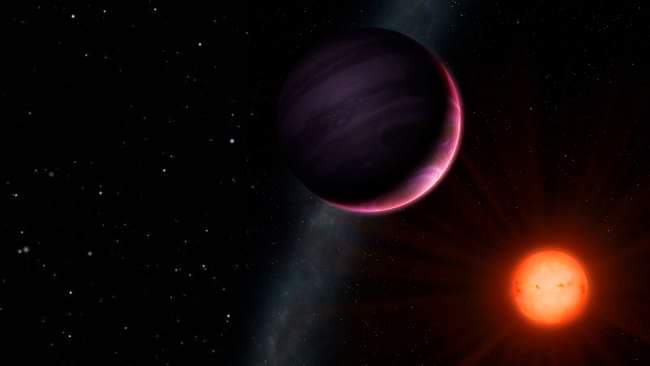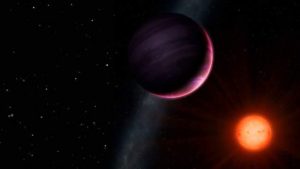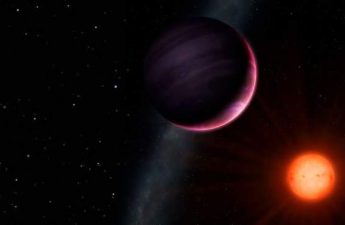Newly Discovered Monster Planet Is Too Big For Its Star
https://t.co/XvGZYiO7Rk Nov 1, 2017 12:46 PM
A giant planet has just been discovered and its mere existence threatens the current view of how planets form. The new object is simply too big for its star.
The planet, known as NGTS-1b, is slightly less massive than Jupiter and orbits a star which has half the mass and half the radius of our Sun. Current theories have assumed that such a small star could not collect enough material to form a planet so big. The discovery was possible thanks to the Next-Generation Transit Survey (NGTS) and is reported in the Monthly Notices of the Royal Astronomical Society.
“The discovery of NGTS-1b was a complete surprise to us – such massive planets were not thought to exist around such small stars. This is the first exoplanet we have found with our new NGTS facility and we are already challenging the received wisdom of how planets form,” lead author Dr Daniel Bayliss, from the University of Warwick, said in a statement.
NGTS-1b is about 0.8 times the mass of Jupiter and roughly the same size. It orbits its star in 2.6 days and due to the close orbit, has a temperature of 530°C (986°F). The star is an M dwarf, one of the most common in the galaxy. This suggests that even if this planet is an exception to the rule, there might be others like it waiting to be discovered.
“Our challenge is to now find out how common these types of planets are in the galaxy, and with the new NGTS facility we are well-placed to do just that,” said Bayliss.
The NGTS is part of the European Southern Observatory’s Paranal Observatory in northern Chile and this is the first exoplanet it has discovered. The aim of the NGTS is to look for gas giants around bright stars so this object was unusual for many reasons.
“NGTS-1b was difficult to find, despite being a monster of a planet, because its parent star is small and faint. Small stars are actually the most common in the universe, so it is possible that there are many of these giant planets waiting to found,” added co-author Professor Peter Wheatley, also from the University of Warwick.
The planetary system is located 600 light-years from Earth and a few millions of stars exist within that distance. NGTS could spot more “monster planets” lurking where we don’t expect to find them.


